Star players don’t get traded all that much anymore, especially if they’re still in their prime. The salary cap has placed increasing pressure on teams to try and build a winner within its limits, which makes entry-level deals and bridge contracts worth their weight in gold and often the difference between a team making a Stanley Cup push and wasting another year of their playoff window.
But even Wayne Gretzky was traded.
Arguably the greatest player to ever play the game, Gretzky was traded by the Edmonton Oilers in 1988 at just 27 years old. He’d already put up four seasons of 200+ points and hoisted the Stanley Cup four times in five seasons, but the team’s owner was afraid that he’d walk in free agency when his contract expired in 1992 and thus decided to capitalize on his value when it was at it’s highest. The result was the biggest trade in NHL history, one that is still referred to as “The Trade.”
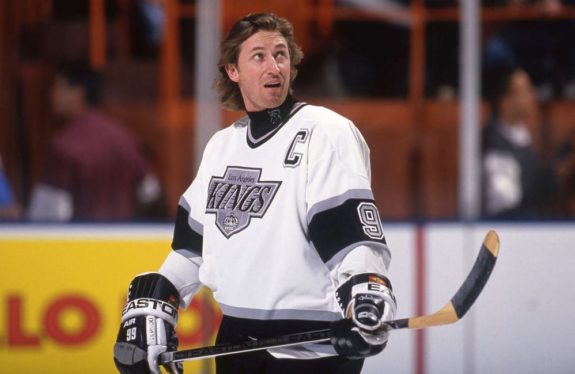
Over 30 years later, another young star is in the rumour mill and likely to be traded in the coming weeks. Since he was selected second overall behind Connor McDavid in the 2015 NHL Entry Draft, Jack Eichel has established himself as one of the league’s best forwards, on one of the league’s worst teams. He’s eclipsed 70 points twice with the Buffalo Sabres, topping out at 82 in 2018-19, which earned him a massive eight-year, $80 million contract. But given the team’s struggles, Eichel has been vocal about his frustration with pretty much everything, and the rumours have swirled as to where he will land before next season.
According to Pierre LeBrun at The Athletic, the New York Rangers, Los Angeles Kings, Minnesota Wild, Anaheim Ducks, and Columbus Blue Jackets have emerged are the front runners in the Eichel sweepstakes, but nearly every team would be interested in acquiring him (from ‘LeBrun: The Jack Eichel sweepstakes have begun, NHL coaching carousel news,’ The Athletic, 16/6/21). Whether or not they can afford him is a different question. Trading a star player like Eichel has little precedence in today’s NHL, but we know the asking price will be higher than most teams are willing to pay. However, a look back at other blockbuster trades in NHL history should give us a sense of what Eichel will cost.
Joe Thornton (2005)
The Trade: The Boston Bruins send Thornton to the San Jose Sharks for Wayne Primeau, Marco Sturm, and Brad Stuart.
Joe Thornton was the Boston Bruins’ biggest star in the 2000s. He was the first-overall selection in 1997 and in his sixth season in the NHL, he recorded 101 points, one of only three players to break the 100-point barrier between 2001- 2004. However, the team had been unsuccessful in the playoffs with Thornton as captain, so, in a desperate move to shake up the franchise, the Bruins shipped out their 26-year-old star in November of the 2005-06 season to the San Jose Sharks for three veterans.

Brad Stuart was arguably the biggest name in the deal apart from Thronton. The 26-year-old defender was the third-overall pick in the 1998 draft and had become a regular 30-point producer and came close to the 40-point mark the season before. Marco Sturm was another former first-round choice back in 1996 and had since become a reliable middle-six forward who played tough minutes and was counted on to score 40-50 points. Wayne Primeau was the senior of the package at 29 years old, and although he was also a first-round pick from 1994, he hadn’t scored more than 20 points in a season until 2003-04, when he posted 29.
2021 Comparable: Buffalo sends Eichel to the Minnesota Wild for Matt Dumba, Marcus Foligno, and Nick Bjugstad
The Wild are similar to the Sharks of the 2000s in that they have a talented roster but lack that true star who will propel them to the next level. If they approach the Sabres with a Thornton-esque deal, they would have to fork over the 26-year- old Matt Dumba. Like Stuart, he’s a former first-round pick and is a quality offensive defender. There’s been talk that he could be moved this offseason, making him a likely candidate in this trade. Marcus Foligno replaces Sturm, and although Foligno is two years older than Sturm was and is less offensively gifted, he’s a proven top-six player and provides the Wild with veteran leadership.
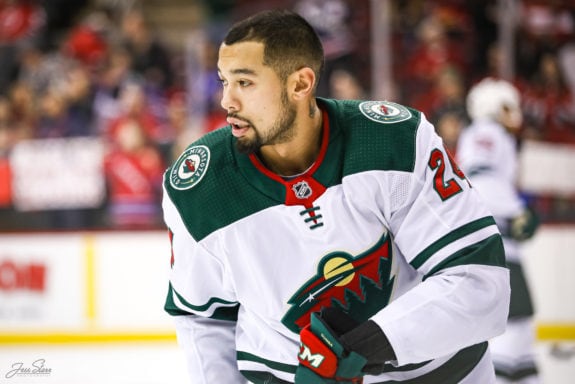
The final piece of the puzzle is Nick Bjugstad, who replaces Primeau as the highly-touted prospect who failed to live up to the hype and now plays mostly a bottom-six role. It may be harsh to say that, at 28 years old, he’s likely past his best hockey, but he failed to step up with the Pittsburgh Penguins and now with the Wild. Earlier in his career, Bjugstad showed promise, with 40+ points in 2014-15 and 2017-18, but has since fallen below the 20-point mark. He could be a reclamation project for the Sabres, who likely wouldn’t say no to acquiring the big forward, but he’s not a top-line option anymore.
Chances of Happening
The Thornton deal was doomed from the moment the ink dried. While Stuart, Sturm, and Primeau did fine with the Bruins, they did little to improve the team’s playoff chances, and Boston missed the post-season in both 2005-06 and 2006-07. By the time they won the Cup in 2011, none of those players were on the team anymore. The Sharks, however, became perennial playoff contenders with Thornton and reached the Conference Finals in both 2009-10 and 2010-11. He was still around when they made their first Stanley Cup Final appearance in 2016, leading the team in the regular season with 82 points and ranked fourth in playoff scoring with 21 points in 24 games.
How this deal turned out is a significant reason why teams rarely deal young players for roster players or veterans anymore. Despite that Dumba, Foligno, and Bjugstad made up a good package, there’s no combination of players that the Wild could offer that would equal Eichel’s impact for the same price. Given today’s salary cap constraints, there’s zero chance that a trade for a 24-year-old star doesn’t include a first-round draft pick. In fact, it probably shouldn’t have happened 16 years ago, but the Sharks aren’t complaining.
Jeremy Roenick (1996)
The Trade: The Chicago Blackhawks send Roenick to the Phoenix Coyotes for Alexei Zhamnov, Craig Mills, and a first-round pick in 1997.
Like Thornton, Jeremy Roenick was the face of his team in the late 1980s and early 1990s, but the Chicago Blackhawks failed to find playoff success with him at the helm. He led the team in scoring from 1991-94, but after an injury in 1994-95, the Blackhawks wanted to move his massive contract. That’s when the Phoenix Coyotes, who had just relocated from Winnipeg, came looking for a star after they had just lost Teemu Selanne. Acquiring Roenick cost the Coyotes their two-time 70-point player in Alexei Zhamnov, who was in his fourth NHL season, minor-league tough guy Craig Mills and a first-round pick in the upcoming draft.
2021 Comparable: Buffalo sends Eichel to the Columbus Blue Jackets for Patrick Laine, Josh Dunne, and a first-round pick in 2021.
The Patrick Laine experiment was a huge bust for the Columbus Blue Jackets, and their latest star has little interest in sticking around long-term. Seth Jones reportedly also wants out, so the team desperately needs a new star, and they have the cap space to add Eichel’s eight-year, $10 million contract. So why not kill two birds with one stone? At 23 years old, Laine is younger than Zhamnov, but he has produced at a similar pace so far in his career. He also has never been the biggest star on any team he’s played, and given how unhappy he is in Columbus, it would make sense to move him, especially if the return is Eichel.
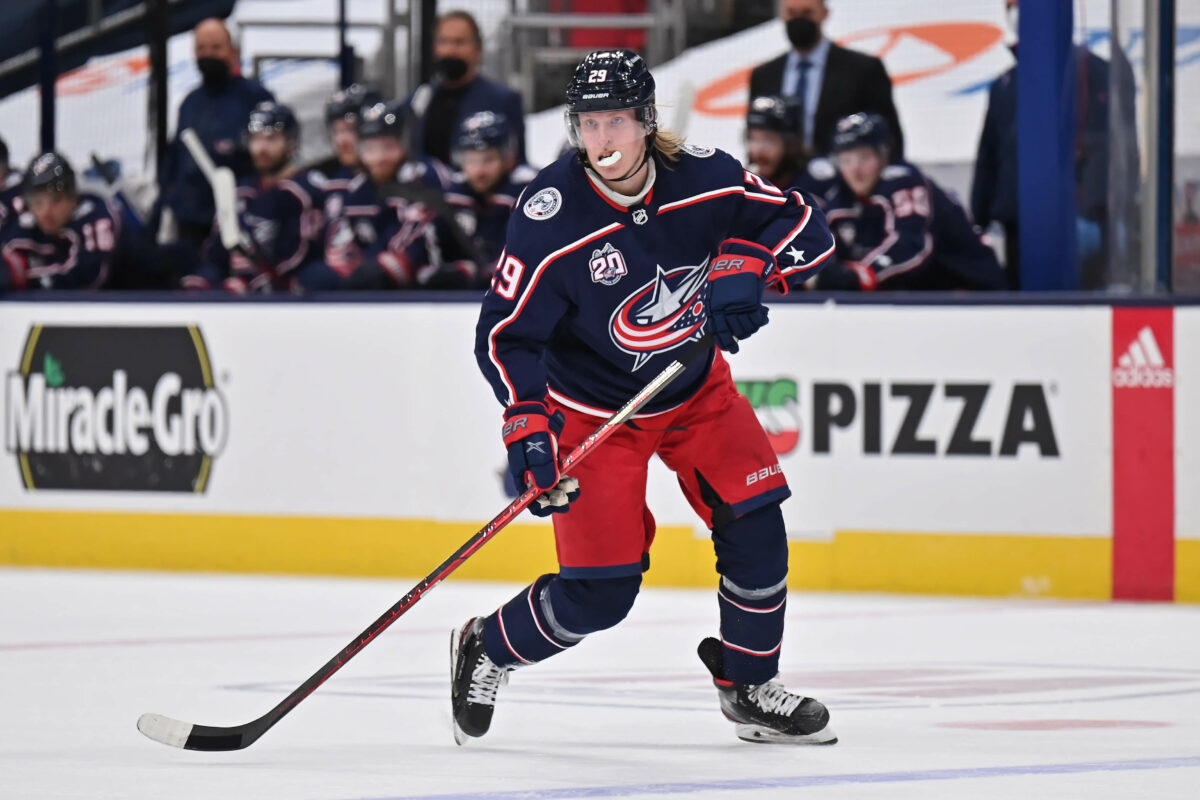
At the time of the trade, Mills had played just four games for the Jets but had shown promise as a power forward in the OHL. The closest comparable I could find on the Blue Jackets’ depth chart was Josh Dunne, a recent free-agent signee who made his AHL debut this season after spending three seasons with Clarkson University, where he put up 10 points in 15 games with the Cleveland Monsters. Then there’s the draft pick, which will be the fifth-overall selection and not one the Blue Jackets would be keen to part with, but if the return is Eichel, they may be convinced. They also have the 24th pick, which they acquired from the Toronto Maple Leafs, but that likely won’t entice the Sabres.
Chances of Happening
The pick is likely exactly what the Sabres are looking for, and having two selections in the top-10 would give them a boost similar to the Ottawa Senators last season when they picked Tim Stützle and Jake Sanderson. However, Laine’s value at the moment is rock bottom; the Jets had to add another former first-round pick in Jack Roslovic to acquire Pierre-Luc Dubois earlier in 2020-21. The Blue Jackets would therefore have to add another significant piece to the deal, at least, and after their flurry of moves two seasons ago, they don’t have a lot of top prospects left to dangle as trade bait.
Then there was the result of the Roenick deal, which was similar to the Thornton trade. Aside from 2001-02, the Blackhawks failed to make the playoffs from 1997-2008. Roenick, on the other hand, played until 2009 and made the playoffs nine times in that span with the Coyotes, Philadelphia Flyers, and Sharks. He wasn’t the same player as he was in Chicago, but he was still an effective sniper who could be relied on for 60+ points during his prime.
Teemu Selanne (1996)
The Trade: The Winnipeg Jets send Teemu Selanne, Marc Chouinard, and a fourth-round pick in 1996 to the Anaheim Ducks for Chad Kilger, Oleg Tverdovsky, and a third-round pick in 1996.
Before they became the Coyotes, the Jets tried to make one last big splash to save the Winnipeg franchise. By the 1990s, it was falling apart. They had a decent run in the 1980s with Dale Hawerchuk, Randy Carlyle, Thomas Steen, and Dave Babych, but as the NHL continued to expand in the United States and salaries increased drastically, the Jets just couldn’t spend the money to remain competitive. So, they adopted a bold new strategy by trading their established stars for up-and-comers, starting with their biggest, Teemu Selanne, who was shipped out with prospect Marc Chouinard to the fledging Anaheim Ducks for two highly-rated young guns and a draft pick.
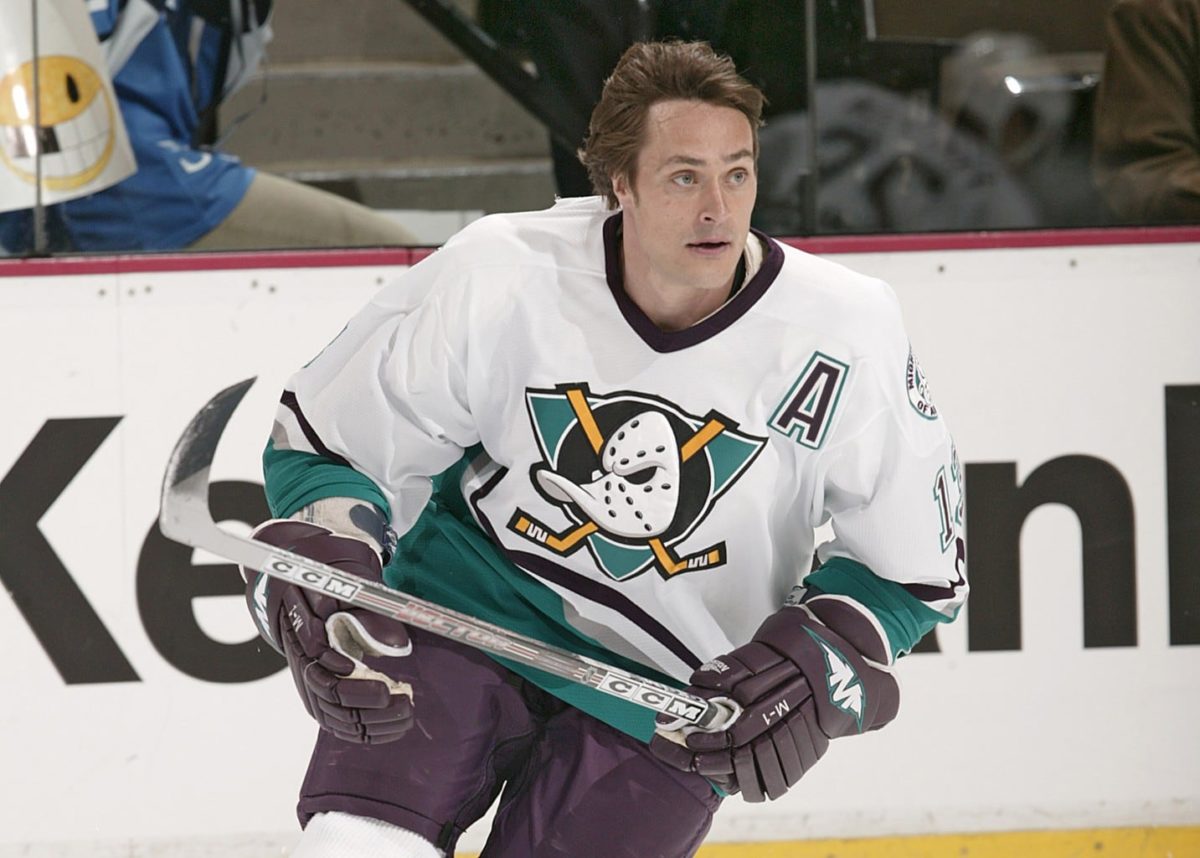
Oleg Tverdovsky and Chad Kilger may not ring a bell today, but in 1996, they were two of the biggest prospects in the NHL. Tverdovsky was the Jets’ big prize. He was the second-overall pick in 1994 behind Ed Jovanovski and promised to become a top offensive defenseman thanks to his smooth skating and scoring instincts. He further cemented his status when he became the youngest player to suit up for the Ducks at 18 years, eight months, and 13 days when he made his debut in 1994-95.
Kilger, who was 6-foot-3 and 204-pounds on draft day, promised to be the next big power forward and was selected fourth overall in 1995. He also made an early debut, playing his first game in 1995-96 and dressed for 45 NHL games before the trade. It was a huge haul for the Jets, but unfortunately, it wasn’t enough to keep them in Winnipeg. Just a few months later, the team confirmed their move to the desert to become the Phoenix Coyotes.
2021 Comparison: Buffalo sends Eichel, JJ Peterka, and a fourth-round pick in 2021 to the Anaheim Ducks for Jamie Drysdale, Trevor Zegras, and a third-round pick in 2021
The Ducks are in a similar situation today to the one they were in 25 years ago when they were loaded with top prospects but lacked that star forward who could take them to the next level. Eichel could be that star, but if they follow the deal brought them Selanne, then they’ll have to pay up. The first piece would likely be Jamie Drysdale, who was chosen sixth overall in the 2020 Draft and looks to be an excellent offensive defender. Then there’s Trevor Zegras, the Ducks’ top forward prospect, who was selected ninth overall in 2019. Both players made their NHL debut this season, playing 24 games and scoring three goals each, although the latter finished the season with 13 points compared to Drysdale’s eight.
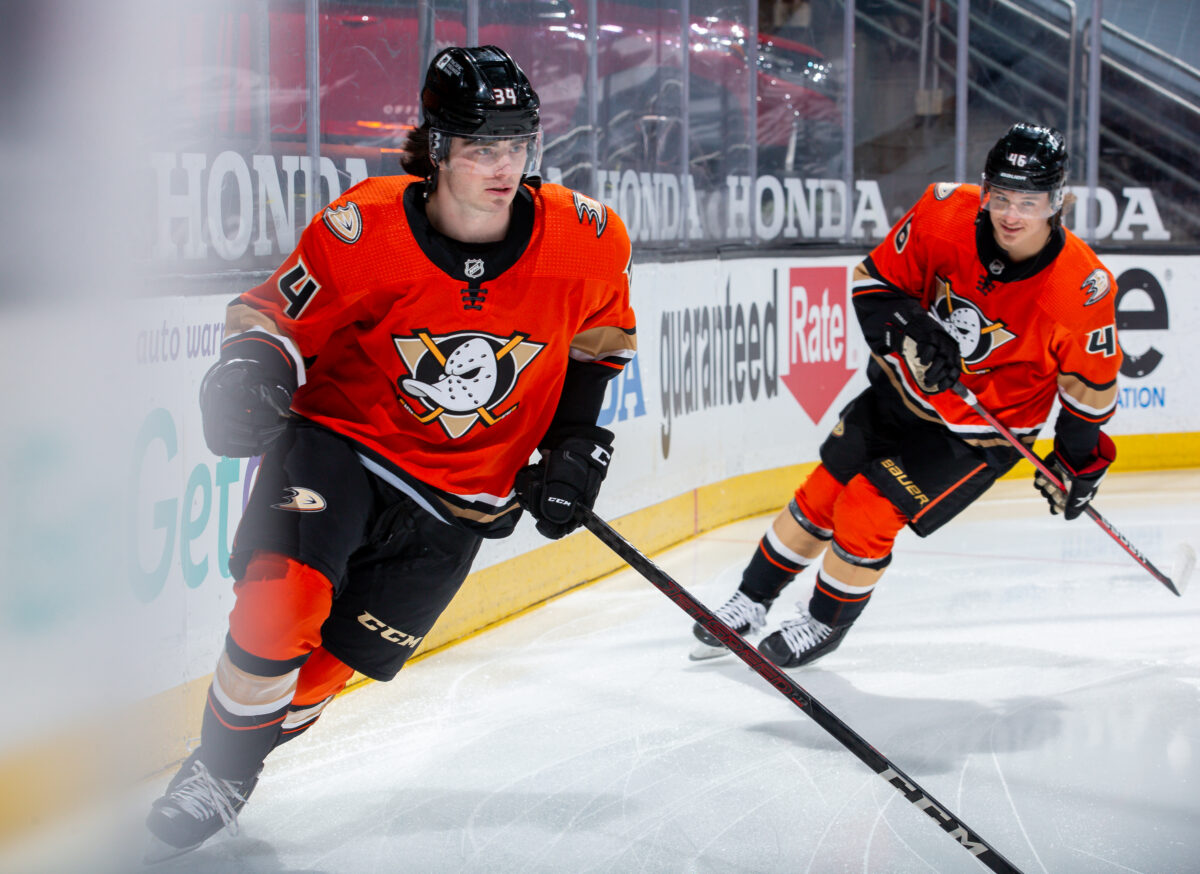
In return, the Sabres would have to part with 2020 second-round pick JJ Peterka to equal Chouinard, who was taken 35th overall in 1995. It’s not a perfect swap since the two prospects have very different playing styles. Peterka is a small, speedy sniper who demonstrated his skill at the World Juniors twice already, while Chouinard is a big, hulking power forward who played with some of the best Quebec-born prospects of the early 1990s. But they have a similar ranking on the team’s depth chart, not as the top prospect, but a candidate for the top-5.
Chances of Happening
On paper, this deal doesn’t look all that bad. Zegras and Drysdale are developing into two of the NHL’s best young players, while Eichel is already there. But would the Ducks part with their two brightest stars just for a chance at Eichel? It’s a lot to give up for a player who still hasn’t broken the 100-point barrier. Comparatively, Selanne had scored 132 points in his rookie season, and before the trade, had 72 points in 51 games. While Eichel has been consistently a point-per-game player over the past four seasons, his career-high is 82 points, scored in 2018-19.
Again, this deal did not work out at all for the Jets/Coyotes. Tverdovsky scored 55 points in 1996-97 but never reached that total again, and by 1999-2000, he was traded back to the Ducks for a pick, who also didn’t pan out. Kilger was even more disappointing, playing mostly in the minors before he was shipped to the Blackhawks for Keith Carney. Chouinard hit 30 points just twice in his career. Meanwhile, Selanne became synonymous with Anaheim, teaming up with Paul Kariya to form a dangerous top line that took the team to the Stanley Cup Final in 2003, and led the 2006-07 team to their first Stanley Cup championship.
Matt Duchene (2017)
The Trade: The Colorado Avalanche send Matt Duchene to the Ottawa Senators for Shane Bowers, Andrew Hammond, Kyle Turris, a first-round pick in 2019, and a third-round pick in 2019. The Avalanche then traded Turris to the Nashville Predators for Sam Girard, Vladislav Kamenev, and a second-round pick in 2018.
Matt Duchene may not be on the same level as the other players mentioned on this list, but in 2017, he was considered to be one of the best players on the struggling Colorado Avalanche, and general manager Joe Sakic used that to his advantage to swing one of the biggest deals of the past decade. Duchene was the third-overall pick in 2009 and had at least 20 goals in four of five seasons. He didn’t have a long history of success, but that didn’t dissuade the Ottawa Senators, who, after nearly upsetting the Pittsburgh Penguins in the 2017 Conference Final, were looking to add a number one center, and Duchene fit the bill.
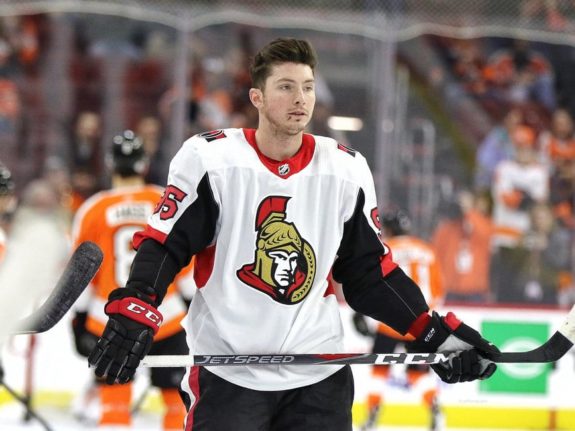
The Avalanche were more than happy to turn Duchene into late first-round pick Shane Bowers, backup goalie Andrew Hammond, plus a first and a third-round pick in 2019, but they didn’t really need center Kyle Turris, who the Senators had to get rid of to make the deal work. So, the Nashville Predators were roped in to make it a three-way deal, and Turris landed in Tennessee in exchange for young defenseman Samuel Girard, prospect Vlad Kamenev, and a pick in 2018.
2021 Comparison: Buffalo sends Eichel to the New York Rangers for Braden Schneider, Keith Kinkaid, Ryan Strome, a first-round pick in 2022, and a third-round pick in 2022. The Sabres then trade Strome to the Ottawa Senators for Tyler Kleven, Logan Brown, and a second-round pick in 2021.
To mirror the Senators and Predators, the Rangers would need to part with promising defenseman Braden Schneider, the 19th-overall pick in the 2020 Draft, plus 31-year-old third-string goalie Keith Kinkaid and 27-year-old center Ryan Strome, who had a breakout season in 2019-20 but is more consistently a 50-point player, much like Turris. On a contract worth $4.5 million for next season, Strome likely has high trade value, and the Rangers could use that to acquire Eichel and rope in another team that is looking for a top center, like the Senators.

To acquire Strome, then, the Senators would have to offer the Sabres big defenseman Tyler Kleven, who was a second-round pick in 2020, and, likely, Logan Brown. He’s been injured and failed to make an impact in the NHL since he was drafted 13th overall in 2016, but he still has potential, and Buffalo could use a promising center to back up Dylan Cozens, who projects to be the team’s top center in the future. The second-rounder gives them three in 2021, which should help them fix this messy situation. Given that the return is three draft picks, including a first-rounder in a deep 2022 draft class that includes Shane Wright, Matthew Savoie, Brad Lambert, and Simon Nemec, the Eichel deal may become a three-way trade.
Chances of Happening
Eichel’s $10 million contract doesn’t expire until 2025-26, which will likely scare off potential suitors, despite his talent, especially since the salary cap will remain the same in 2021-22. Teams are under even more pressure to remain cap compliant, so a three-way deal with the Sabres is a plausible solution to make something work financially. The Rangers can eat Eichel’s full salary, and they’ve been associated with his name for a while. However, they would likely want to dump some salary anyway; otherwise, they would have nearly $40 million tied up in just five players. The deal would also give the Sabres the biggest possible since few teams are willing to part with multiple core pieces to acquire just one, albeit supremely talented, player.
Wayne Gretzky (1988)
The Trade: The Edmonton Oilers send Wayne Gretzky, Marty McSorley, and Mike Krushelnyski to the Los Angeles Kings for Jimmy Carson, Martin Gelinas, and their first-round draft picks in 1989, 1991, and 1993.
Little needs to be said here. Gretzky was the most dominant player in the 1980s, and it seemed unfathomable that he could be moved, and yet it happened during the 1988 offseason. The Great One was joined by the tough-as-nails defenseman Marty McSorely, who was just 24 years old at the time, and the 27-year-old Mike Krushelnyski, who had a career-high of 88 points in 1984-85 but was more consistently a 50-point player.
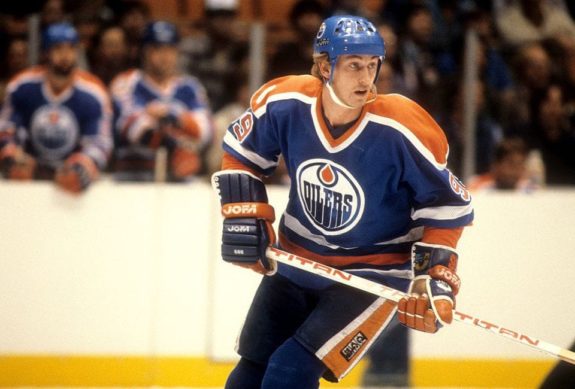
In return, the Oilers received 19-year-old phenom Jimmy Carson, the second-overall pick in the 1986 Draft who was coming off a 107-point sophomore season, and Martin Gelinas, the seventh-overall pick in 1988 who put up 131 points in 65 games in the QMJHL for the Hull Olympiques. They also got three first-round picks, which became 18th, 20th, and 16th overall, and although the players they drafted were largely disappointing, they nearly had Adam Foote or Saku Koivu.
2021 Comparable: Buffalo sends Eichel, Rasmus Ristolainen, and Cody Eakin to the LA Kings for Quinton Byfield, Gabriel Vilardi, and first-round picks in 2021, 2023, and 2025.
Tough guys don’t really exist in today’s NHL, at least not in the same way they did in the 1980s and 1990s. So, I’ve gone with an age comparison for McSorley, and one of the closest equivalents is streaky defenseman Rasmus Ristolainen. After eight seasons in Buffalo, the Sabres are getting tired of his inconsistency, but at 26 years old, he still has value and has popped up in the rumour mill over the past few months. Finding a middle-six forward is relatively easy, too, and Cody Eakin fits that role. He’s had some big seasons, putting up 41 points in 2018-19, but didn’t find much success with the Sabres.
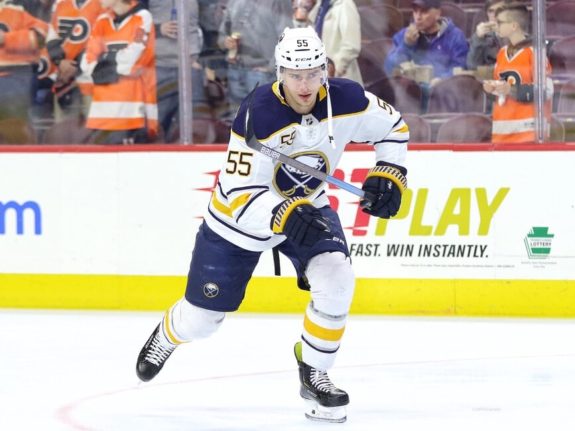
That brings us to the Kings, who will have to give up their 2020 second-overall selection, Quinton Byfield, just as they did back in the late 1980s with Carson, who was also a second-overall pick. The former only played six NHL games this past season but had 20 points in his first partial AHL season, a sign of big things to come. Gelinas is replaced by another high-prospect, Gabriel Vilardi, the 11th-overall pick in 2017. He just finished his first full NHL season with 10 goals and 23 points in 54 games. Finally, there are the picks. This year, the Kings will be picking 8th, and if they sent that to the Sabres, that would give Buffalo two top-10 picks and a great opportunity to boost their franchise.
Chances of Happening:
Eichel is not Gretzky, but this trade seems more in line with what the Sabres are asking for Eichel, according to one unnamed NHL executive. When the Rangers first inquired about him, they balked at the asking price, which allegedly included several core players and their first pick in 2020. But the Sabres are stuck between a rock and a hard place with Eichel; losing him will set the franchise back to square one, but he isn’t happy and likely won’t play as well as he could as long he’s in Buffalo. So, the asking price almost has to be exorbitant, and a trade resembling the earth-shattering Gretzky trade could be what gets this deal done.
Will Eichel Be Traded?
Many of these trades didn’t go very well for the team who parted with their emerging star, regardless of the return. That same will likely happen in an Eichel trade, so it begs the question, will the Sabres lower their asking to move the face of their franchise or keep him if their demands aren’t met?
While there has yet to be a formal trade request, according to Sabres general manager Kevyn Adams, there is tension between the two sides, and it’s clear Eichel is tired of losing. The 2020-21 season didn’t help, nor did the messy situation surrounding his injury that led him to claim he feels disconnected from the franchise. Speculation suggests the relationship might be too far gone to repair, which will force the Sabres to deal their star for the best price they can get in return. Whether that deal resembles one of these historic trades or sets a new precedent for a star player in the salary cap era, it will be a blockbuster for the ages.